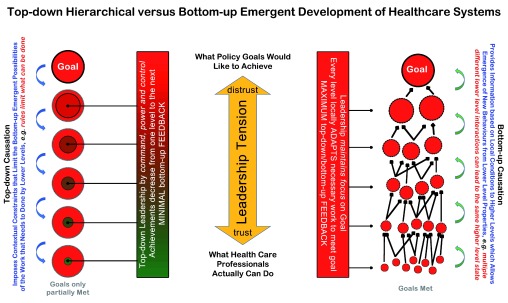Figure 1. A conceptual model of the implications of top-down versus bottom-up leadership on the function of health systems.
The effects of the top-down policy-driven approach on health care delivery are illustrated by the ever-decreasing size of the inner circles from one organizational level to the next where each level further constrains what the next lower level can achieve – the top-down leadership’s constraints minimize bottom-up feedback (left). The bottom-up approach is illustrated by dotted circles – to emphasize the open and adaptive nature of entities at each level- all focused on the system’s overall goal. Every higher-level circle emerges as a result of various interactions (arrows) at a lower level, resulting in the variance of characteristics and behaviors that depend on unique local circumstances. While each level shows variability in its components, each level component is the best adapted version of this level in its unique environment, and each does uniquely contribute to the achievement of the overall policy goals & settings – leadership minimizes constraints and encourages constant feedback across all levels of the system (right). Note that the complexity of a system arises from the feedback loops between top-down and bottom-up interactions across all the layers of the system. These two approaches are not mutually exclusive, rather – as the figure highlights – reflect the tension in leadership between trust (minimize constraints, maximize contextual adaptation) and distrust (maximize constraints, minimize variability). For a detailed discussion on causation in complex adaptive systems see Ellis 8; for a discussion on complex adaptive organizations see Laloux 7.

